10 Different Types Of Palm Trees And Where To Find Them

- There are more than 2,600 different types of palm trees in existence.
- All palm trees from the Phoenix family produce edible dates, some tastier than others.
- The Windmill palm can survive freezing temperatures and has been seen growing even in Russia.
Palm trees come in various shapes and forms and can be found all around the globe. There are more than 2,600 different species of palm trees, and to identify them, we usually take a look at their leaves or palm fronds. Another feature that enables us to distinguish one species from another is the type of their stems.
Palm types of trees prefer tropical climate, warm, and sunny environments. Still, some species can live in more temperate conditions, where it is a bit colder. Some palm trees can even survive and grow healthy when indoors, which makes them excellent for exciting interior design choices.
10. Diamond Palm
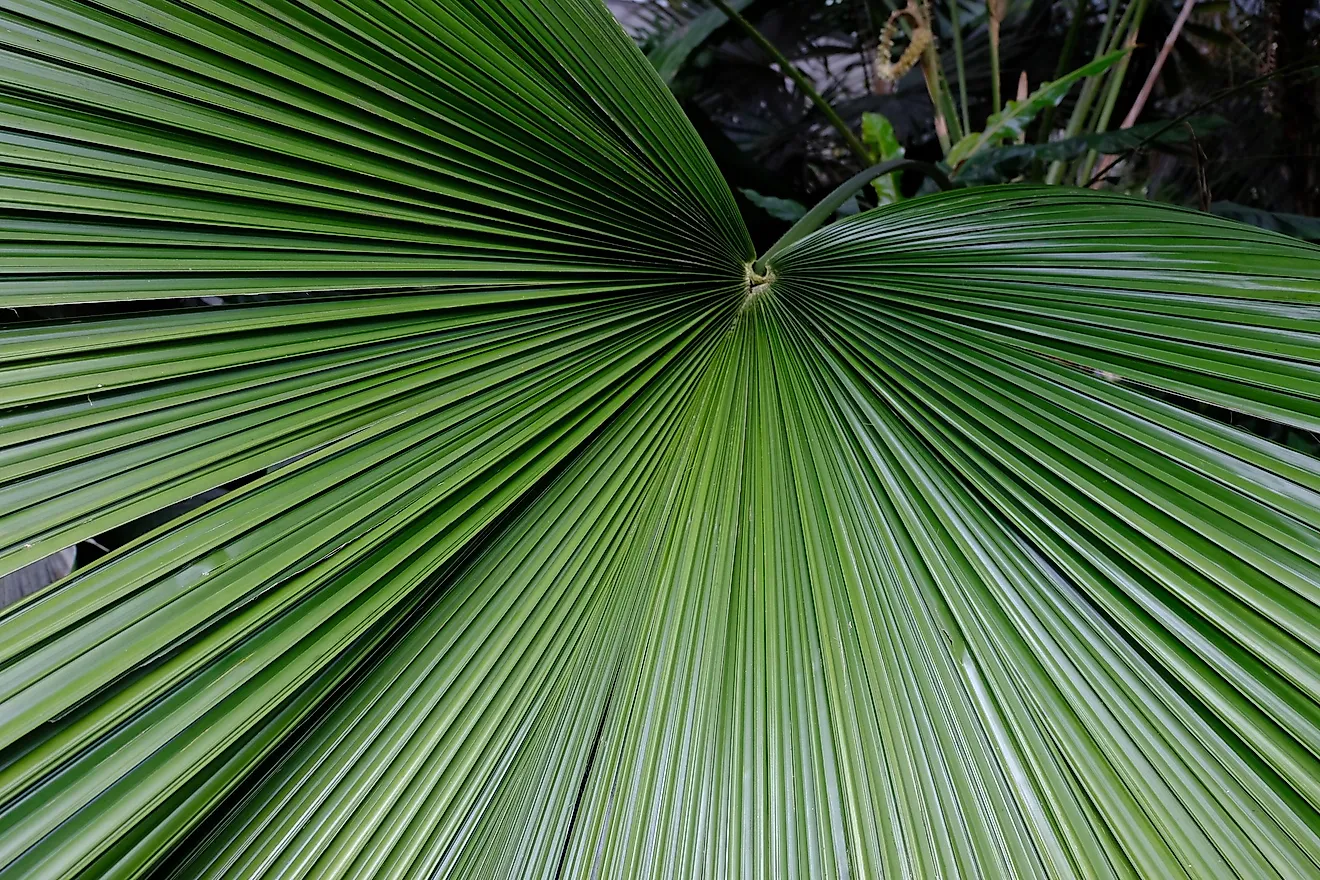
A palm tree with the most interesting name in Latin, the Johannesteijsmannia Altifrons, is found in tropical forests of southeast Asia. The most interesting thing about this palm tree is that its trunk is under the ground, which makes it look as the leaves are coming from the ground. The leaves are enormous, around 12 ft (3.5 m) long and 6 ft (1.8) m wide.
9. Windmill Palm
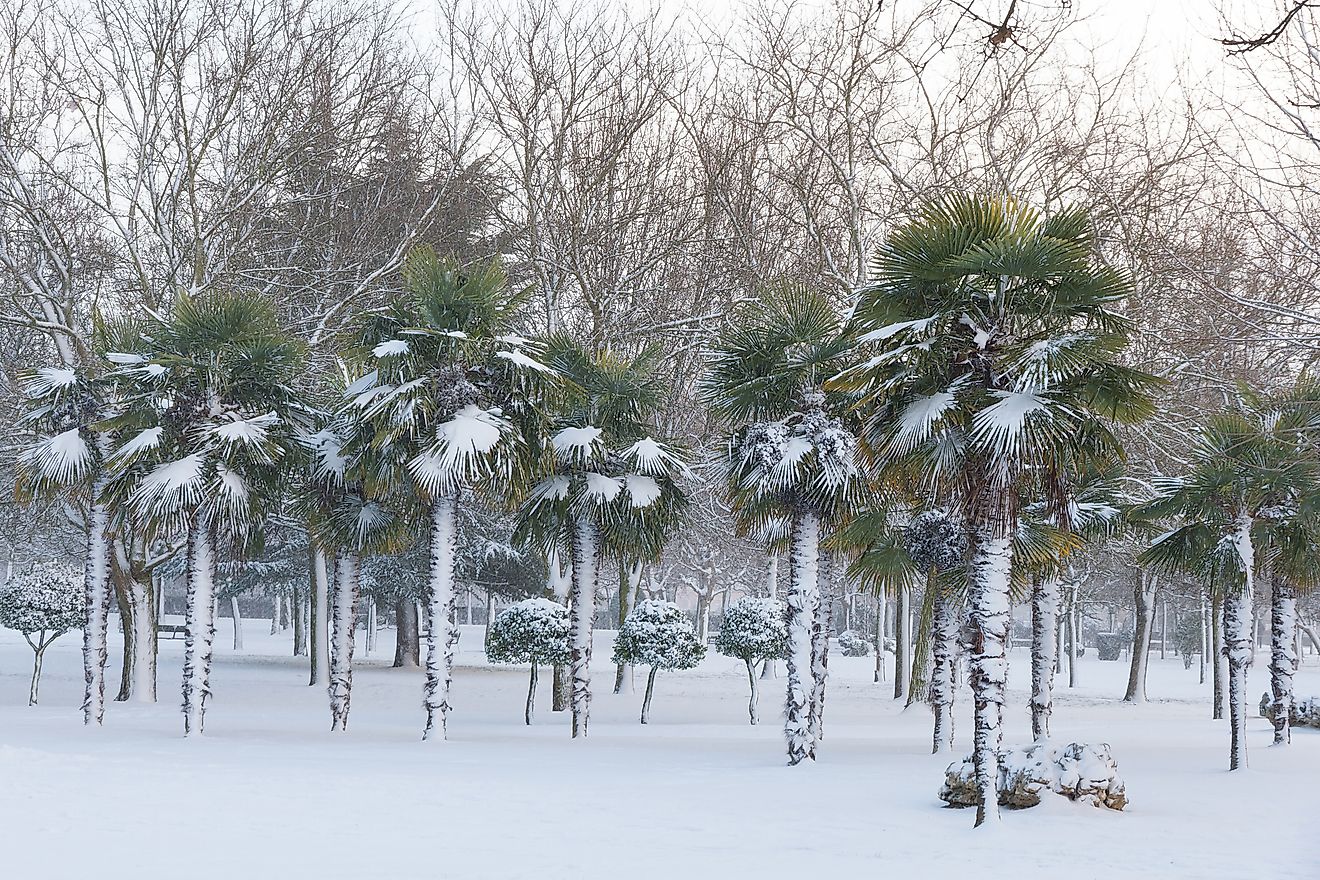
This palm tree can be seen mostly in China, but it is so tolerant it can grow even in freezing conditions. The Windmill palm grows up to 25 ft (7.5 m) and has a fairly slim trunk that measures around 8″ (20 cm).
8. Mazari Palm
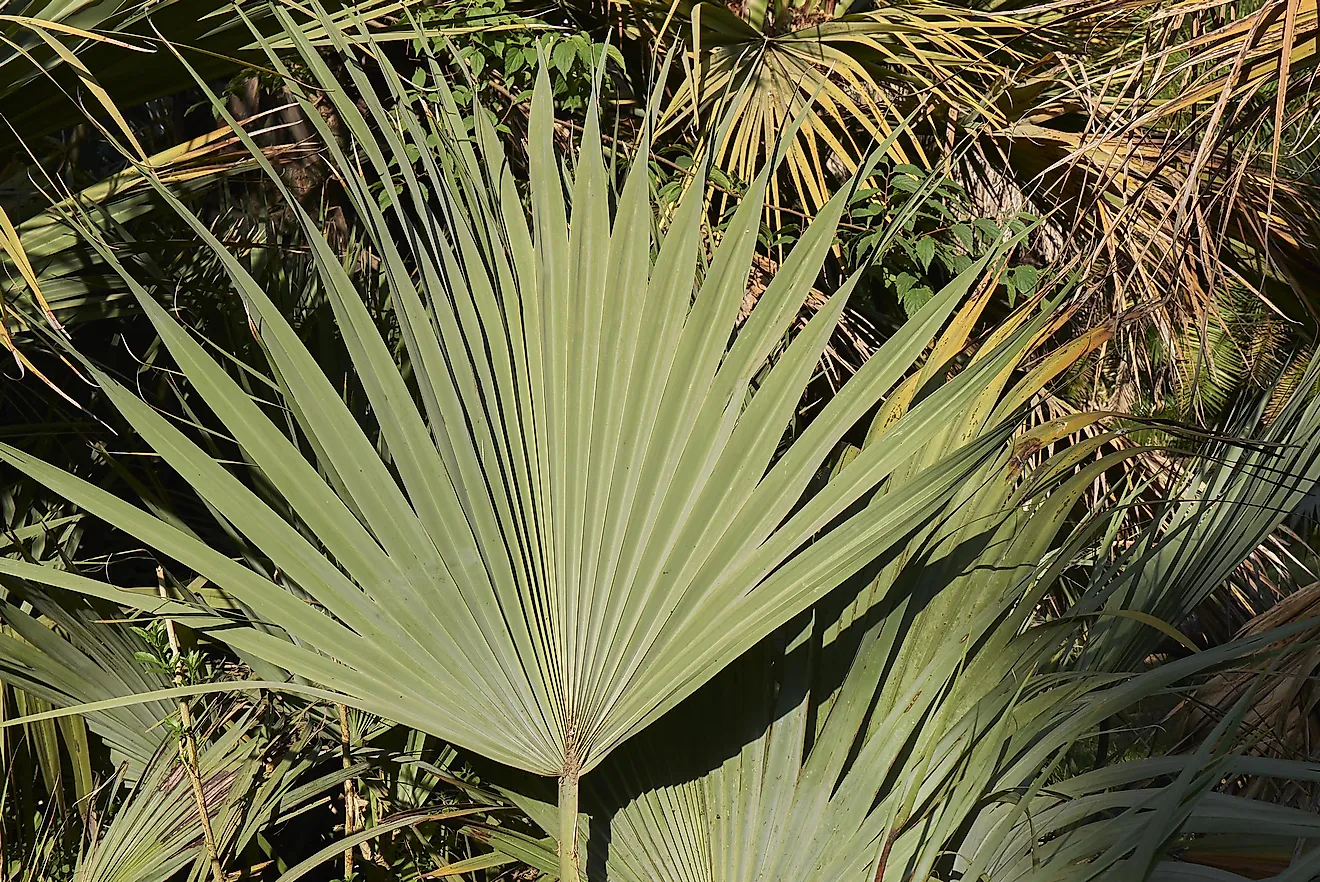
Another palm native to Asia, mostly the southwest parts, looks more like a spiky bush than a typical palm tree. It grows clusters of stems (up to 20 ft/6 m long) that feature up to 4 ft (1.2 m) long fan-shaped leaves. It can survive significant variations in temperature and has almost silver-blue leaves.
7. Lipstick Palm
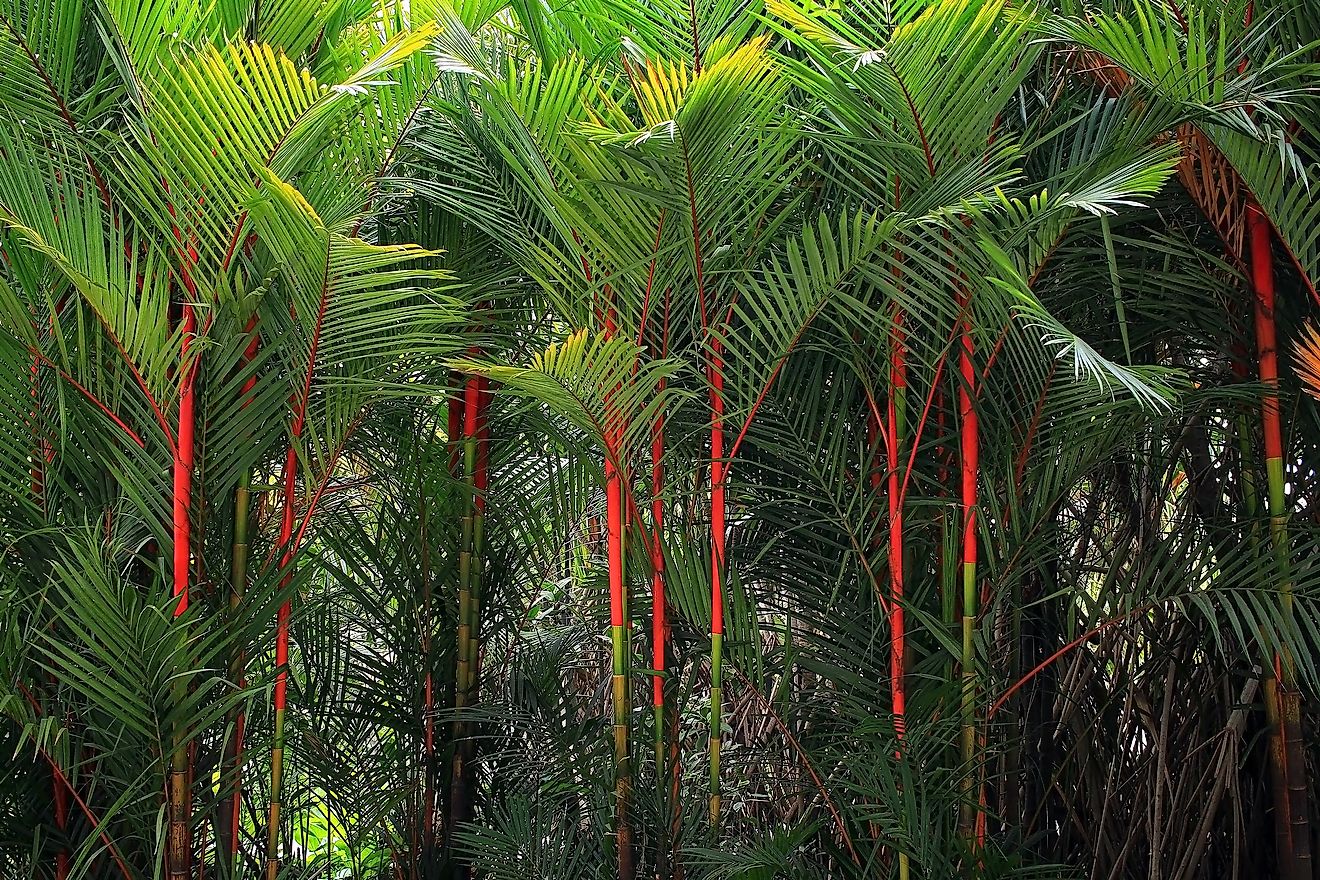
This unusual palm tree is native to Malaysia and Thailand. Unlike other types of palm trees, the Lipstick palm loves to live in swamps and close to rivers. It got the name because the top part of the trunk is colored red, and resembles lipstick. It grows as high as 50 ft (15 m), and it has feather-shaped leaves that come in different shades of green.
6. Mexican Palm Tree
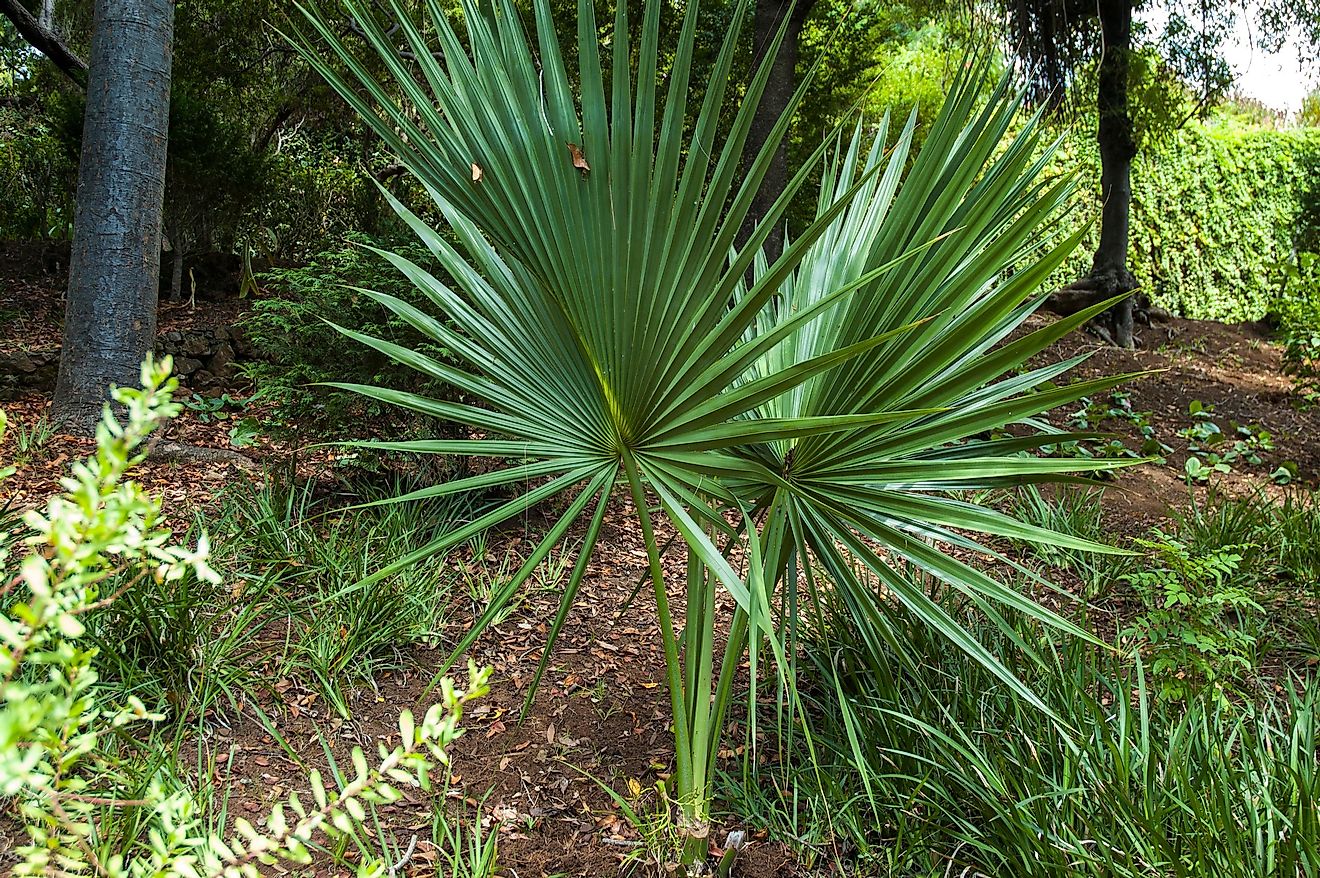
Although the dates are not as tasty as some others found on the list, the Washingtonia robusta grows them in abundance. The trunk of the tree is quite long and thin and grows up to 82 ft (25 m). This tall tree is also known as the Mexican fan palm, which explains the fan-shaped 3 ft (1 m) long bushy type of leaves.
5. Chinese Fan Palm
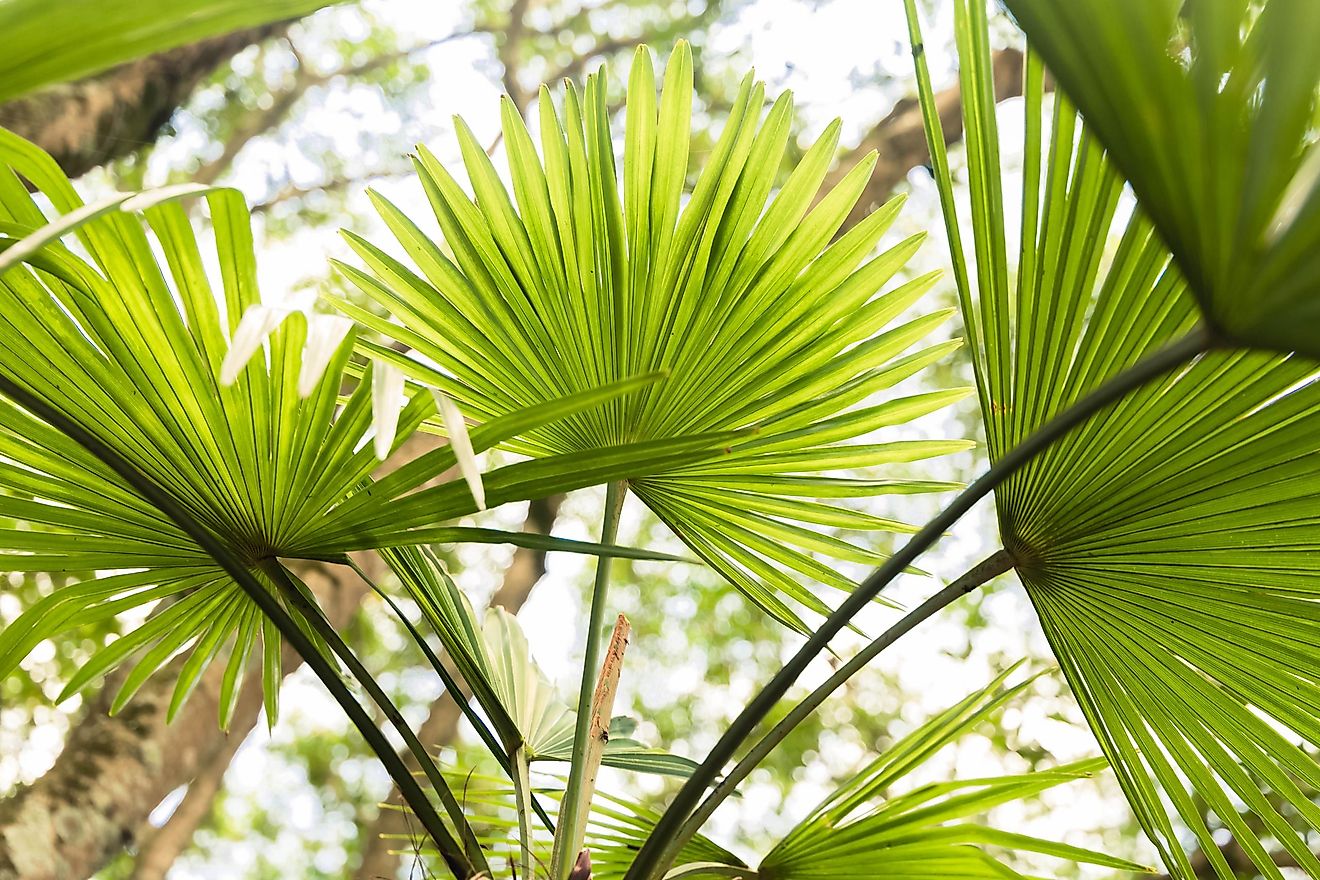
Native to most of Asia, this palm tree got its name because of fan-shaped leaves that grow out of a 50 ft (15 m) long stem. The Chinese fan palm also has quite a spread, as it spans over 12 ft (4 m).
4. Sylvester Palm Tree
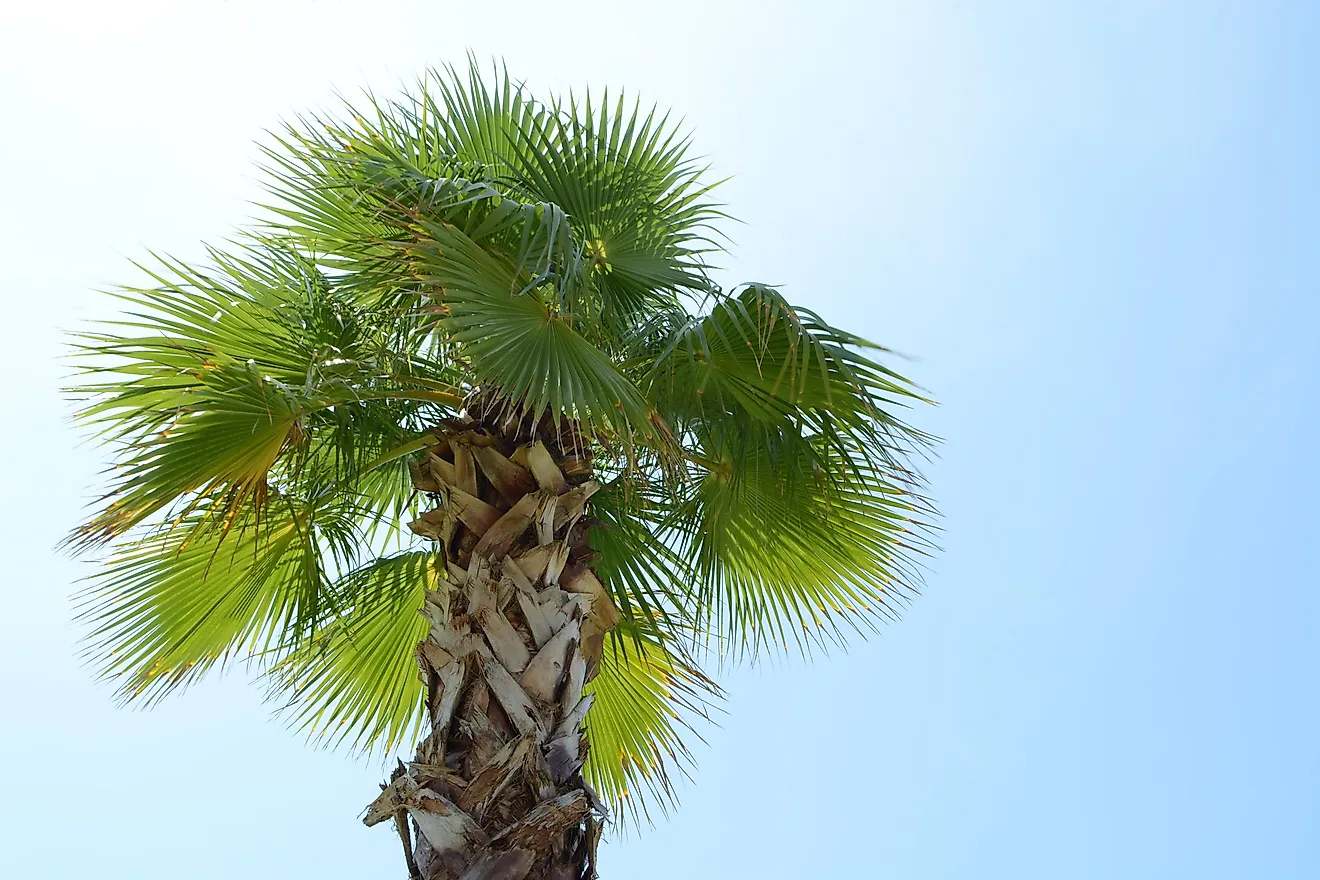
Closely related to its Phoenix relative from the Canary Islands, the Phoenix sylvestris is native to countries of India and Pakistan. It also produces dates and grows anywhere between 13 and 50 ft (4 - 15 m).
3. Canary Palm Tree
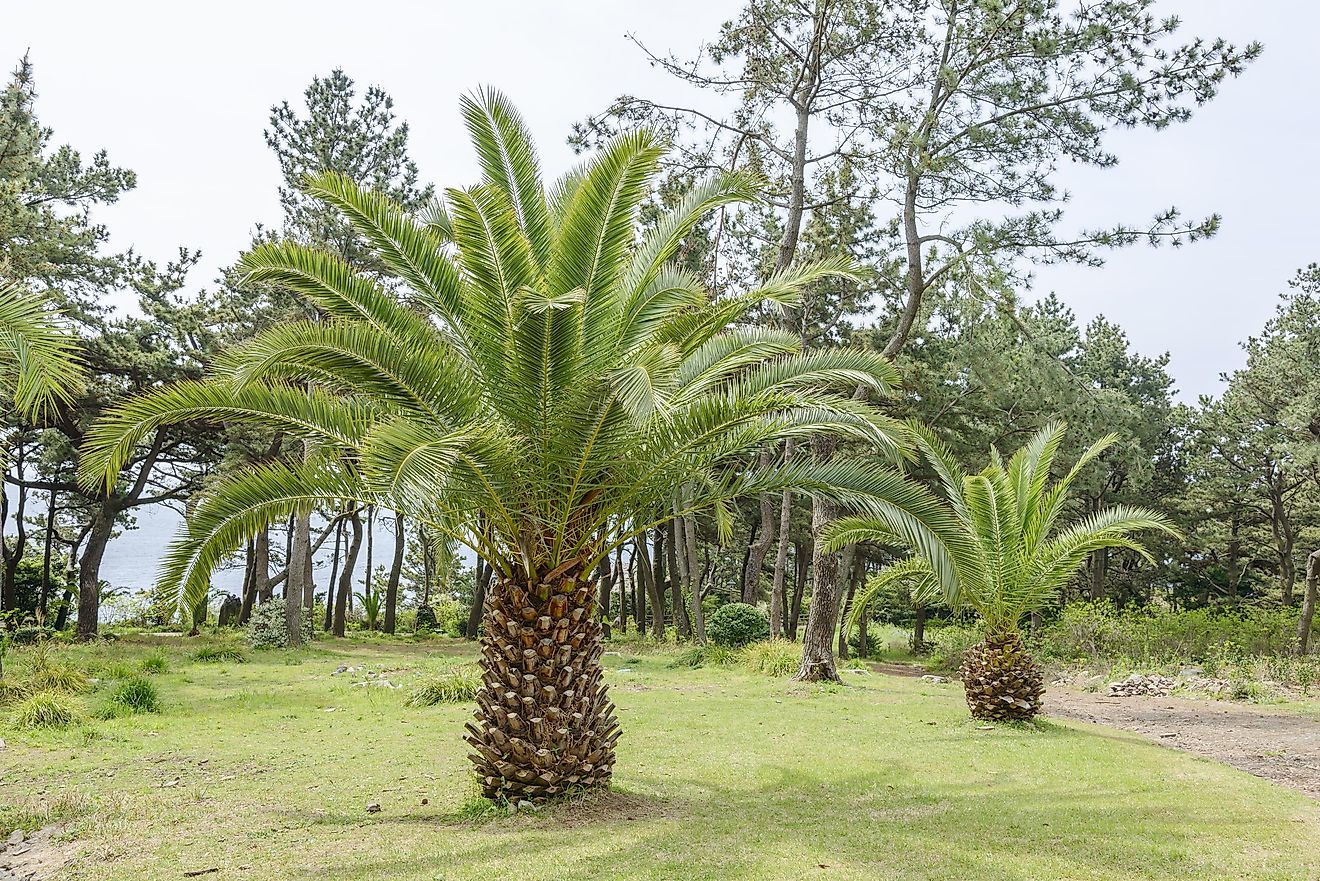
The Phoenix canariensis is a gorgeous looking palm tree. Found in hot environments like the Canary Islands, it can be as tall as 66 ft (20 m) and grow impressive dark-green leaves that stretch for 20 ft (6 m). Edible dates are another gene feature of this tree, as it belongs to the Phoenix family.
2. Bottle Palm Tree
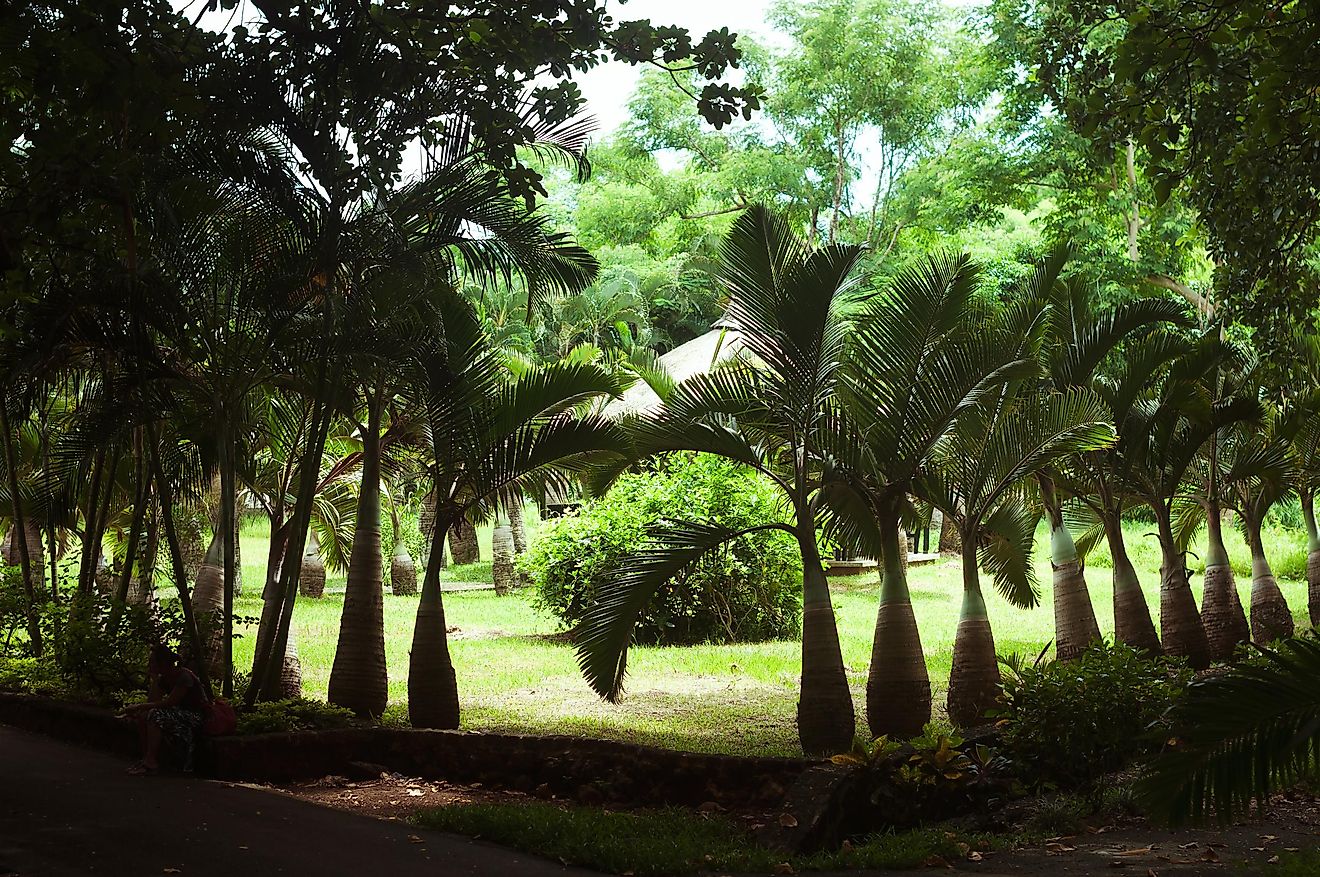
Found in sunny states like California and Florida, this species has a short trunk that is shaped like a bottle. It grows up to 10 ft (3 m) long and has only a few large palm trees at the top. They grow longer than the trunk, up to 12 ft (3.6 m).
1. Mediterranean Dwarf Palm
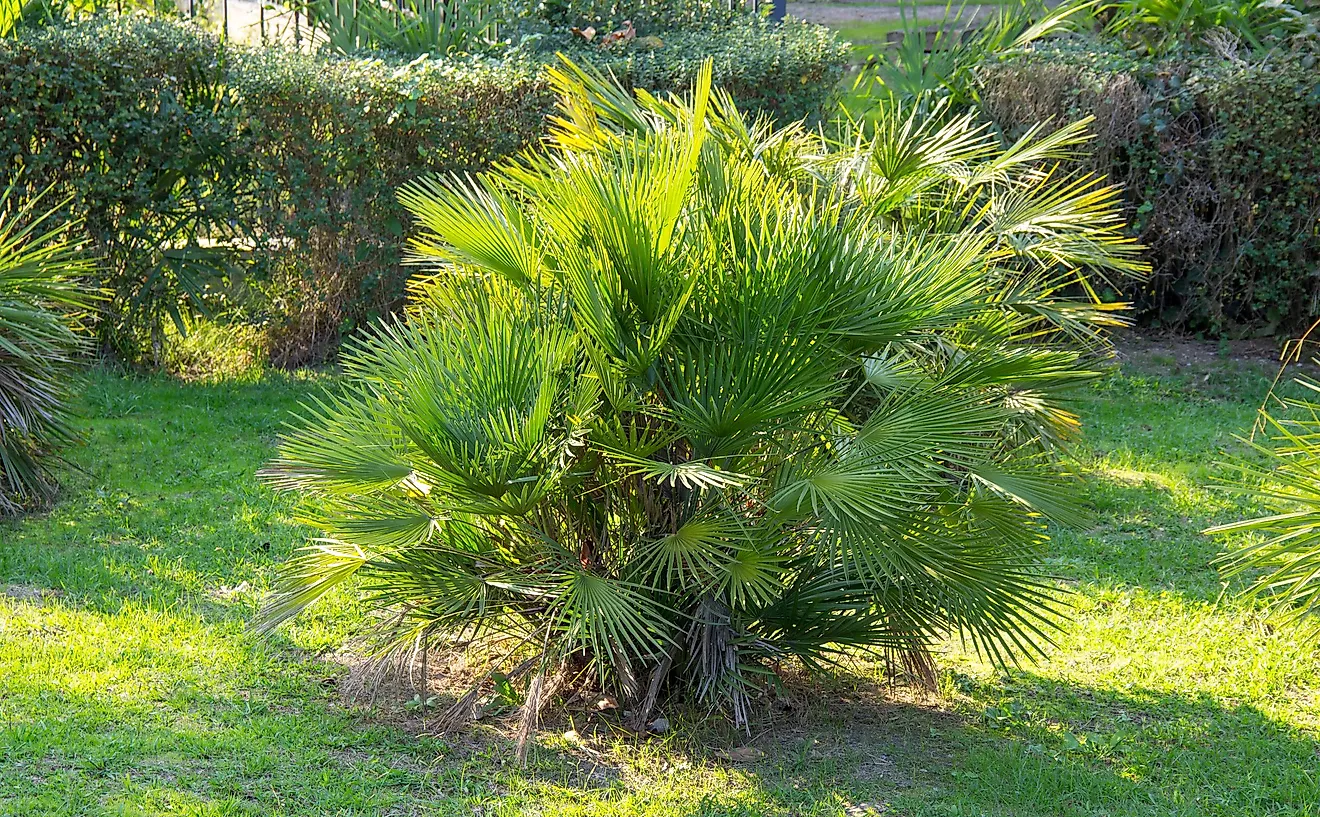
This little resilient tree can grow in both hot and cold climates, surviving temperatures that go down to 10°F (-12°C). Its leaves are fan-shaped, light, and silver-green and do not grow more than 30″ (80 cm). Although it is considered relatively small when it comes to the height of palm trees, this dwarf species grows up to 20 ft (5 m).











